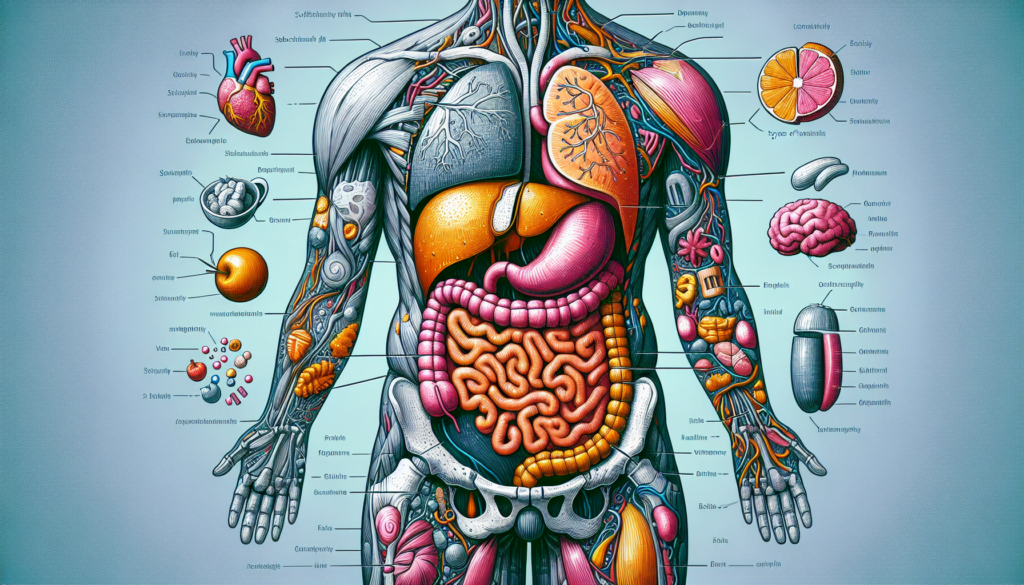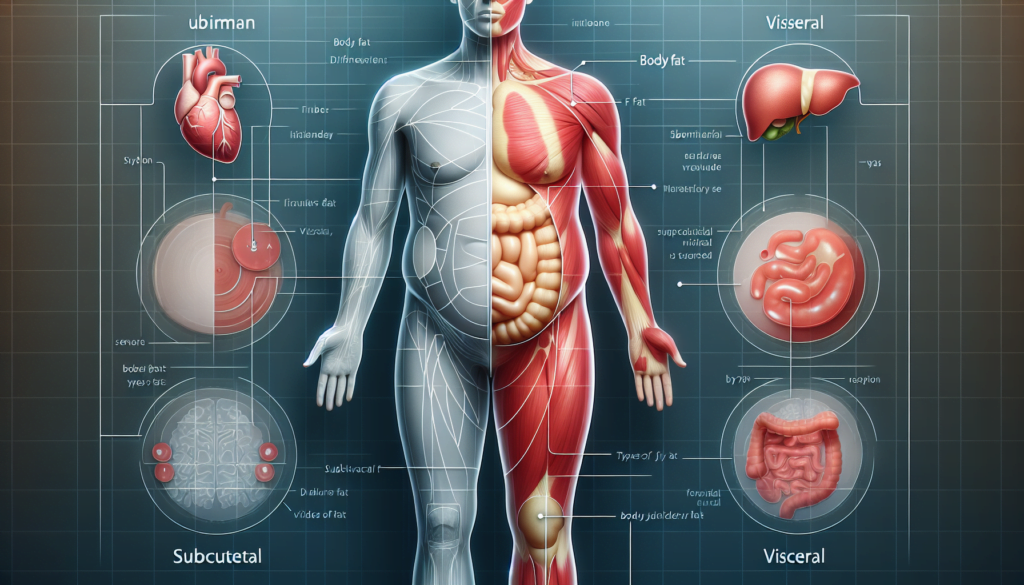Do you know the types of fat in the body? Let’s take a friendly tour through the fascinating world of fat in your body. We’ll explore the different types of fat within you, shedding light on their functions and impact on your overall health. From the essential protective layer to the stubborn belly fat, this article will offer valuable insights into the various types of fat that make you uniquely you. So please sit back, relax, and let’s embark on this enlightening journey into your body’s different types of fat.
Types of Fat in the Body
When it comes to the topic of fat, there is often a negative connotation attached to it. However, not all fat is created equal. The human body contains different types of fat that serve various purposes and have distinct characteristics. Understanding the different kinds of fat in the body can help shed light on their roles and importance in our overall health. So, let’s dive into the fascinating world of fat and explore its various forms.
1. Subcutaneous Fat
Subcutaneous fat, also known as superficial fat, is the type of fat that lies just beneath our skin. It is the most visible and easily detectable fat in our bodies. When you think of pinching the skin on your arm or abdomen, you feel subcutaneous fat. This layer of fat acts as insulation, helping to regulate body temperature and protect our vital organs.
Although subcutaneous fat is often associated with body shape and aesthetics, it serves various essential functions. It acts as an energy reserve, storing excess calories that can be utilized during famine or limited food intake. Additionally, subcutaneous fat helps cushion and protect our bones and muscles from injury.
2. Visceral Fat
While subcutaneous fat lies beneath our skin, visceral fat is found deeper within our bodies, surrounding our organs. This type of fat is located in the abdominal cavity and is often called “belly fat.” Unlike subcutaneous fat, which can be pinched and visually observed, visceral fat cannot be easily seen or felt.
Visceral fat plays a significant role in our health, and its accumulation has been linked to various health problems, including heart disease, type 2 diabetes, and metabolic disorders. It secretes hormones and other substances that can affect our organs’ functioning. Keeping visceral fat levels in check through a healthy diet and regular exercise is crucial.

3. Brown Fat
Brown fat, also known as brown adipose tissue (BAT), is a type of fat that is abundant in infants but decreases as we age. Unlike other types of fat that primarily store energy, brown fat is specialized in generating heat. It contains more mitochondria, which are responsible for producing energy.
The primary role of brown fat is to regulate body temperature, especially in newborns and hibernating animals. It helps to keep them warm by burning energy and generating heat. While brown fat is less abundant in adults, recent research suggests it may have a metabolic protective effect, helping to burn calories and regulate metabolism.
4. White Fat
White fat, also known as white adipose tissue (WAT), is our bodies’ most common type of fat. It is responsible for storing excess calories in the form of triglycerides. White fat accumulates in various body parts, such as the abdomen, thighs, and buttocks.
White fat has a crucial role in energy storage, providing a reserve of fuel that our bodies can tap into when needed. It also releases hormones and signaling molecules that regulate appetite and metabolism. However, excessive accumulation of white fat, especially visceral fat, can lead to obesity and associated health problems.

5. Beige Fat
Beige fat, also known as beige adipose tissue, is a fascinating type of fat with brown and white fat characteristics. It was discovered relatively recently and is believed to arise from white fat cells when activated by certain stimuli, such as cold exposure or exercise.
Beige fat has the unique ability to switch between energy storage and energy-burning functions. When activated, beige fat can produce heat similar to brown fat, helping to increase energy expenditure and potentially promote weight loss. Although beige fat is in lower amounts than white fat, researchers are exploring ways to activate and harness its metabolic benefits.
6. Intramuscular Fat
Intramuscular fat, as the name suggests, is stored within our muscles. It provides energy during prolonged exercise when other energy sources, such as glycogen, become depleted. Intramuscular fat also serves as a cushion for our muscles, protecting them against injuries.
Intramuscular fat amounts vary depending on age, physical activity levels, and overall body composition. Athletes, especially those engaged in endurance sports, may have higher levels of intramuscular fat to support their increased energy needs. Proper nutrition and training can influence the balance of intramuscular fat.
7. Epicardial Fat
Epicardial fat is a unique type of fat that surrounds the heart. It acts as a protective layer, cushioning and insulating the heart from external forces. However, excessive accumulation of epicardial fat has been associated with cardiovascular diseases, such as coronary artery disease and heart failure.
Epicardial fat is metabolically active and can release inflammatory chemicals that may contribute to the development and progression of heart conditions. Maintaining a healthy lifestyle, including regular physical activity and a balanced diet, can help keep epicardial fat levels in check and reduce the risk of cardiovascular problems.
8. Pericardial Fat
Pericardial fat, similar to epicardial fat, is located around the heart. It sits between the heart and the sac surrounding it, known as the pericardium. While pericardial fat also acts as a protective layer, excess fat accumulation can pressure the heart, leading to cardiovascular complications.
Studies have shown a correlation between high levels of pericardial fat and increased risk of heart disease, atrial fibrillation, and other cardiac conditions. Regular cardiovascular exercise and a heart-healthy diet can help manage pericardial fat levels, reducing the risk of associated health problems.
9. Interstitial Fat
Interstitial fat refers to the fat that fills the spaces between our organs. It provides cushioning and support to the organs, helping to maintain their structural integrity. This type of fat also acts as a shock absorber, protecting our organs from external trauma and mechanical stress.
While interstitial fat is essential for organ function and protection, excessive accumulation can lead to obesity-related health issues. Maintaining a healthy body weight through a balanced diet and regular exercise is crucial for managing interstitial fat levels and promoting optimal organ health.
10. Organ Fat
Organ fat, also known as ectopic fat, refers to fat that accumulates within our organs, such as the liver or pancreas. This fat deposition can impair organ function and has been linked to various metabolic disorders, including non-alcoholic fatty liver disease and insulin resistance.
Reducing organ fat levels often involves lifestyle modifications, such as adopting a healthy eating pattern, engaging in regular physical activity, and managing stress. By improving overall metabolic health, we can minimize organ fat accumulation and reduce the risk of associated complications.
In conclusion, the human body is a complex system that contains various types of fat, each with its specific functions and characteristics. From the protective subcutaneous fat beneath our skin to the energy-burning brown and beige fat, all these types of fat play vital roles in maintaining our health and well-being. By understanding and appreciating the roles of different kinds of fat, we can strive towards a balanced and healthy lifestyle. Remember, it’s not about avoiding fat altogether but understanding and managing it wisely to promote optimal health.





